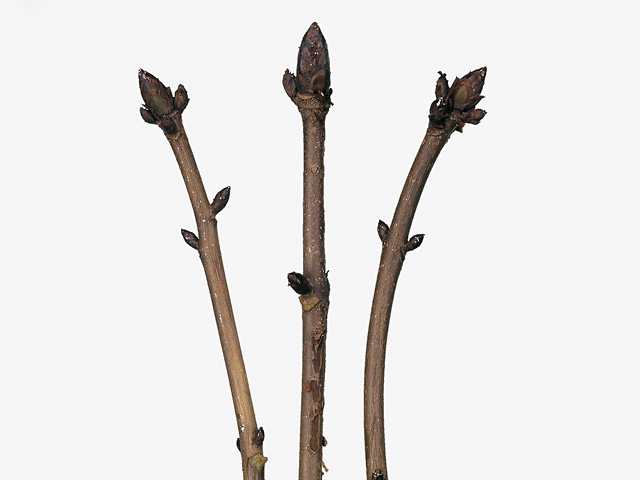Aesculus hippocastanum (branch)

| Life span | Long (over 200 years) |
| Fruit type | Capsule |
| Leaf type | Foliage leaf |
| Winter hardness | Good (USDA-zone 5, 6); Excellent (USDA-zone 1,2,3,4) |
| Soil fertility | No poor soils |
| Inflorescence | Panicle |
| Leaf duration | Deciduous |
| soil pH requirement | Indifferent |
| Light conditions | Semi-shades; Sunny |
| Growth rate | Normal |
| Leaf division | Palmate |
| Flower sex (distribution) | Monoecious (flowers bisexual) |
| Sensibilité au sel d'épandage | Sensitive |
| Fruit-bearing period (notable) | Late summer (September) |
| Autumn color (notable) | Yellow |
| Moisture requirements | Moist; Wet |
The horse chestnut tree, scientifically known as Aesculus hippocastanum, is a long-lived species that can live for over 200 years. It is a deciduous tree with foliage leaves that are palmate and arranged in a panicle inflorescence. The tree is native to regions with USDA hardiness zones 1 to 6, indicating its ability to tolerate extreme winter conditions.
One notable feature of the horse chestnut tree is its fruit, which is in the form of a capsule. The fruit-bearing period occurs in late summer, specifically in September. During this time, the tree produces an abundance of capsules that contain chestnut seeds. These seeds are often referred to as "conkers" and are popularly used in children's games.
In terms of soil fertility, the horse chestnut tree does not thrive in poor soils. It prefers well-drained soils that are not overly rich or poor. The tree is relatively indifferent to soil pH, meaning it can tolerate a wide range of pH levels. However, it is essential to ensure that the soil is not excessively saline as the tree is sensitive to salt spreading.
Light conditions for the horse chestnut tree are best in semi-shaded to sunny areas, where it can receive adequate sunlight for optimal growth. The tree has a normal growth rate and can reach a considerable height when provided with suitable conditions.
During autumn, the horse chestnut tree displays a notable yellow color in its foliage, adding vibrant beauty to landscapes. This color change is highly appreciated by landscaping enthusiasts and adds aesthetic value to the tree.
Moisture requirements for the horse chestnut tree are relatively high, and it prefers moist to wet conditions. Adequate watering is necessary, especially during dry periods, to maintain the tree's health and vigor.
Overall, the horse chestnut tree is a magnificent species that offers various benefits to the environment. Its long lifespan, lovely yellow autumn color, and unique fruit make it a popular choice for landscaping projects. Additionally, this tree provides shade and habitat for various wildlife species, contributing to the overall biodiversity of an area. With proper care and suitable growing conditions, the horse chestnut tree can thrive and enhance the beauty of any landscape for generations to come.
Market availability index by month:
| Jan. | Feb. | Mar. | Apr. | May | Jun. | Jul. | Aug. | Sep. | Oct. | Nov. | Dec. |
|---|---|---|---|---|---|---|---|---|---|---|---|
| 3 | 3 | 3 | 3 | 4 | 3 | 3 | 3 | 3 | 4 | 4 | 3 |